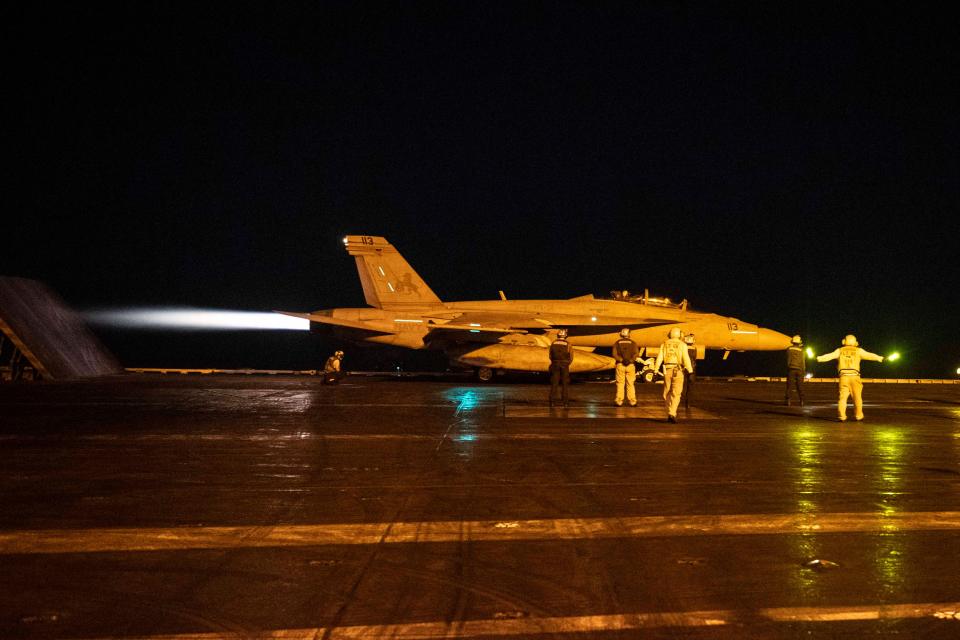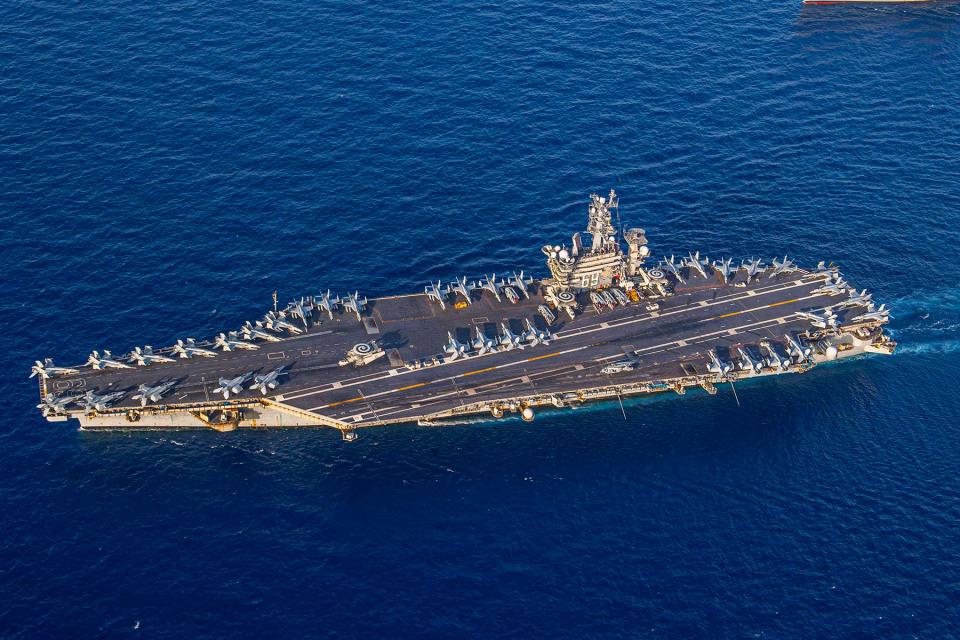US carrier strike group's new video captures the Navy's explosive front-line combat in the Red Sea
The Dwight D. Eisenhower Carrier Strike Group has left the Middle East after a restless deployment.
A video shared this week by the crew of the carrier Ike offers a look at the combat operations.
Footage shows American forces intercepting Houthi threats and conducting strikes in Yemen.
A new video released by the crew of the aircraft carrier USS Dwight D. Eisenhower, which has spent months on the front lines of the US Navy's fight against the Houthis, reveals some of the intense combat that has taken place between American forces and the Iran-backed rebels.
The Eisenhower and the other Navy warships in the carrier strike group left the Middle East on Saturday after spending more than seven months in the region's turbulent waters defending key shipping lanes in the Red Sea and Gulf of Aden from unrelenting Houthi attacks.
As part of these efforts, American forces were frequently tasked with intercepting Houthi missiles and drones in the air and sea. The US also carried out a number of strikes — both unilaterally and with coalition partners — targeting rebel facilities and weapons in Yemen.
The brief video, shared this week to various social media accounts and set to AC/DC's "Back in Black," shows US Navy sailors and pilots during operations on the flight deck of the nuclear-powered carrier, known as the Ike. Aircraft can be seen taking off and landing, as well as being rearmed with munitions.

The video also includes previously unseen combat footage of US airstrikes targeting the Houthis in Yemen and interceptions of their threats after launch.
The aerial footage captures explosions on mountains, above and in the water, and on land. Some coalition partners like Britain and France have also published footage of counter-Houthi engagements, giving the public a close-up look at the conflict.
The Eisenhower strike group arrived in the Middle East in early November, and by late May, American forces had already fired off more than 500 munitions and gone after nearly 430 planned and dynamic Houthi targets, underscoring the high-tempo nature of the operating environment.
That figure has only increased in the weeks since as Houthi attacks have continued unabated, with no signs of slowing down. US intelligence has warned that the conflict may go on for a while, and the increasing financial toll of America's naval presence has raised questions about the long-term sustainability of the counter-Houthi mission.

Engaged in combat regularly against the Houthis, the Eisenhower strike group had to be rearmed and resupplied during its deployment, which was extended twice by Defense Secretary Lloyd Austin. But in a surprise move over the weekend, the Pentagon announced its departure from the Middle East and the plan for it to return home.
Sailing alongside the Ike, the Ticonderoga-class cruiser USS Philippine Sea and Arleigh Burke-class destroyer USS Gravely left the Red Sea and entered the Eastern Mediterranean on Saturday, officially putting a lid on their restless and high-intensity deployment.
"After an eventful seven months in the Middle East region, the IKE strike group is back in the US 6th Fleet, ready as always to demonstrate our flexibility and capabilities where needed," said Rear Adm. Kavon Hakimzadeh, the newly announced commander of Carrier Strike Group 2, in a Monday statement.

"We are prepared to operate anywhere, whenever we are tasked," he added.
The Ike and its escort warships will soon be replaced by the USS Theodore Roosevelt Carrier Strike Group, which has been operating in the Indo-Pacific region.
The changing of America's Middle East naval presence comes amid a particularly active stretch for the Houthis. This month alone the rebels have struck multiple commercial vessels, including one with a drone boat for the first time since the beginning of their troubling Red Sea campaign in the fall.
Read the original article on Business Insider

 Yahoo News
Yahoo News 
